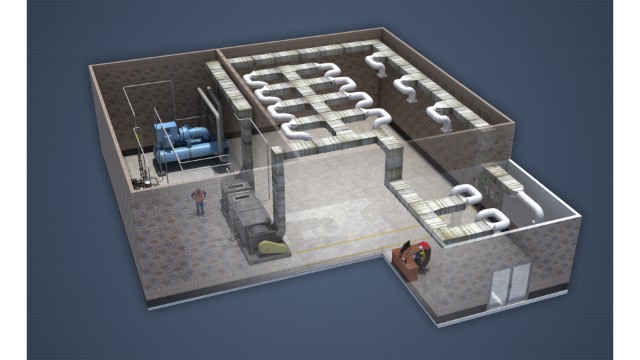




HVAC Basics
The purpose of Heating, Ventilation and Air Conditioning (HVAC) systems is to provide environments that are comfortable for people and allow temperature- or humidity- sensitive equipment to operate safely and reliably. HVAC systems are used in residential, commercial and industrial facilities. This module will identify safe work practices to use when working around HVAC systems and the most common HVAC system components.
Request a demoCourse Details
Learning Objectives
• Describe the purpose of HVAC systems
• Identify safe work practices to use when working around HVAC systems
• Describe the three methods of heat transfer: conduction, convection and radiation
• Identify the types of systems used to distribute heat in HVAC systems
• Describe the purpose of ventilation
• Describe the functions of air conditioning
• Identify and describe the main components of the refrigeration cycle
• Identify environmental and efficiency issues related to the use of refrigerants in cooling systems
• Identify HVAC system components which have standardized graphic symbols for engineering drawings
Specs
| Course Level | Intermediate |
| Languages | English |
| Compatibility | Audio, Video |
| Based on: | Industry Standards and Best Practices |
Key Questions
What are some hazards associated with HVAC systems?
Hazards associated with HVAC systems include electric shock potentials, confined spaces, working from elevated positions and around rotating equipment, handling sharp objects, and handling refrigerants.
In addition to all facility rules, what are some guidelines and procedures to follow to stay safe?
To prevent injuries to personnel, in addition to all facility safety guidelines and procedures: Always use the proper personal protective equipment (PPE), which may include insulated gloves, hard hats, eye protection, fire retardant clothing and safety footwear; Use proper confined space entry procedures before entering any tank, vessel or other confined space; Tie off and secure ladders before use; Understand and practice the safe procedures for handling pressurized refrigerant containers.
What makes up an HVAC system?
In many industrial applications, however, HVAC systems are fairly complex, and can include: fans and blowers, ductwork and dampers, air filters, heating units, heat exchangers, cooling units, pumps, piping and valves, sensors and transmitters, controllers, and switches.
What is the purpose of ventilation, and what does it all include?
The purpose of ventilation is to change or replace the air in an enclosed space in order to control the temperature or humidity, or to maintain air quality. Ventilation includes the replacement of contaminated air with clean fresh air as well as the circulation of air within the space.
Sample Video Transcript
The purpose of heating, ventilation, and air conditioning, or HVAC systems is to provide environments that are comfortable for people, and allow temperature, or humidity sensitive equipment to operate safely, and reliably. HVAC systems are used in residential, commercial, and industrial facilities. An HVAC system is simply a group of components working together to condition the air in an enclosed space. The components insure that the sir in this space is clean and odor free. And its temperature, humidity, and movement are maintained within desired ranges.
Course Applies To
Demos + Pricing
Learn more about our courses, get pricing, and see our platform.











